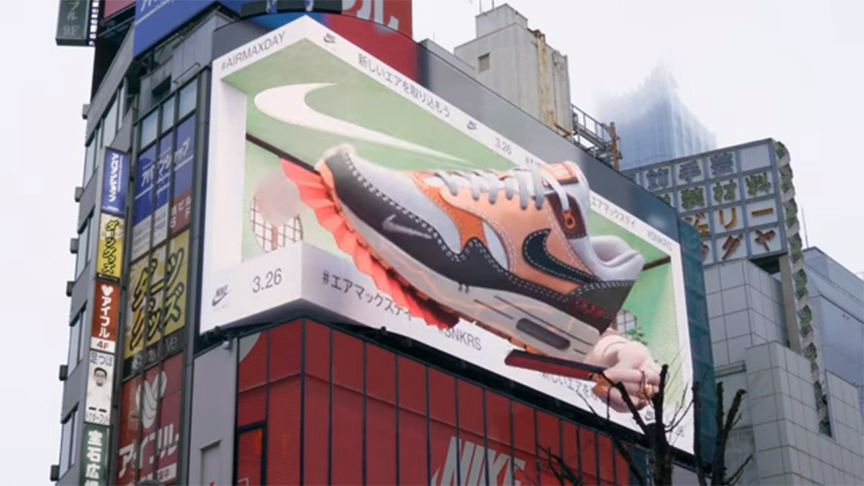Late last month, Nike once again shook up the marketing landscape with a jaw-dropping new 3D billboard in Japan. It’s a concept that has turned the traditional billboard into something almost out of this world.

The move has once again elevated Nike as a leader in marketing. Augusta University’s Dr. Christopher McKinney, associate vice president for innovation commercialization, knows the landscape changes quickly with emerging media.
“The increase both in computing power and graphics processing unit power are transforming what we can do,” said McKinney, who is also a professor in the Pamplin College of Arts, Humanities, and Social Sciences. “Now that the door of opportunity is more widely open, we’re seeing great ways to use that power in marketing.”
McKinney said Nike’s new 3D billboard has raised the bar for others to try to top.
“I do see this as a trend that will continue and even accelerate. Nike has thrown down the gauntlet; others will be trying to ‘one-up’ Nike. Beyond the graphic elements, we’ll see even more clever uses of 3D sound in some marketing applications. In more traditional billboard settings, the brightness, clarity and realism will improve to the point where it will be increasingly difficult to differentiate animation from what looks like a real-life image.”
It’s not just marketing that will benefit from the changing technology; everyday life will likely improve.
“With the growth of virtual reality and augmented reality, we’ll see increasing applications in the home and workplace that take advantage of the VR/AR technologies. This will be especially important in areas such as education, accommodation of disabilities, and entertainment,” said McKinney.
The future possibilities are endless when it comes to marketing campaigns.
“In the next decade, we’ll likely see more tailored marketing using these CG-mediated technologies,” McKinney said.
 Augusta University
Augusta University




